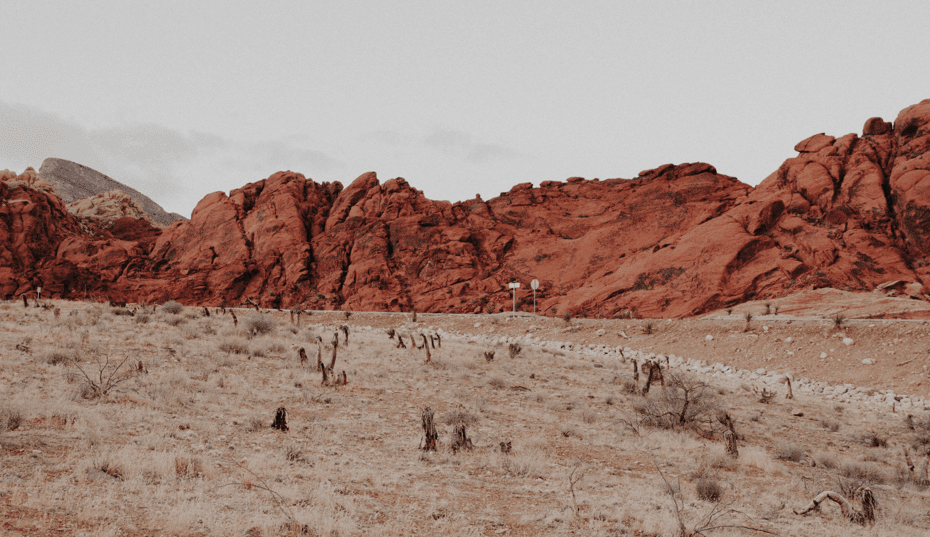Bursting with vibrant colors and fascinating shapes, Sahara Desert Roses have a rich history and cultural significance that make them truly extraordinary. Whether you’re an avid gardener looking to add a touch of exotic charm to your landscape or an adventurous soul yearning to witness these wonders in their natural habitat, this guide is here to enlighten and inspire you. So grab your gardening gloves or pack your bags for an unforgettable journey through the enchanting realm of Sahara Desert Roses!
What Are Sahara Desert Roses?
Sahara Desert Roses, scientifically known as Adenium obesum, are fascinating succulent plants native to the arid regions of Africa and the Arabian Peninsula. Despite their name, these beauties are not roses but belong to the Apocynaceae family.
What sets Sahara Desert Roses apart is their striking appearance. These plants showcase thick stems that hold water reserves during long periods of drought, topped with clusters of stunning flowers in various colors such as pink, red, white, and yellow. The petals often have unique patterns or gradients that add an extra touch of intrigue.
History and Cultural Significance of Sahara Desert Roses
The history and cultural significance of Sahara Desert Roses is a fascinating topic that showcases the rich heritage of this unique plant. These beautiful roses have been prized for centuries, not only for their striking appearance but also for the symbolism they hold in various cultures.
In ancient times, Sahara Desert Roses were believed to possess magical properties. They were often used in traditional medicine and held a special place in spiritual rituals. Their delicate petals and intricate formations made them objects of wonder, captivating the hearts and minds of those who encountered them.
Across different cultures, Sahara Desert Roses have come to represent love, beauty, resilience, and even transformation. In some regions, these roses are seen as symbols of endurance in harsh conditions – just as they thrive in arid desert environments.
Benefits of Having Sahara Desert Roses in Your Garden
Sahara Desert Roses are not only stunning to look at, but they also offer a range of benefits for garden enthusiasts.
One of the major advantages of having these unique plants in your garden is their ability to thrive in arid conditions. With their deep root systems and succulent leaves, Sahara Desert Roses are incredibly drought-tolerant, making them the perfect addition to xeriscapes or water-wise gardens.
Another benefit of having Sahara Desert Roses in your garden is their low maintenance requirements. These hardy plants are adapted to survive in harsh desert environments, meaning they can handle neglect and still flourish.
In addition to their resilience, Sahara Desert Roses also attract pollinators such as bees and butterflies. The beautiful flowers with vibrant colors serve as a food source for these beneficial insects, helping to support local ecosystems and promote biodiversity in your garden.
Furthermore, Sahara Desert Roses can add a touch of exotic beauty to any landscape design. Their striking blooms and unusual shapes make them stand out among more common garden plants. Whether planted individually or grouped together, these captivating plants create focal points that will surely impress visitors.
Adding Sahara Desert Roses to your garden not only brings beauty but also offers numerous practical benefits that make them an excellent choice for any plant enthusiast looking for something extraordinary yet easy to care for.
Common Varieties of Sahara Desert Roses
The Sahara Desert is home to a stunning array of desert flora, including the captivating Sahara Desert Roses. These unique plants come in several varieties, each with its own distinct features and charm.
One popular variety of the Sahara Desert Rose is Adenium obesum. This plant has thick, succulent leaves and vibrant flowers that can range from pink and red to white or even multicolored. Another well-known variety is Euphorbia milii, also known as the Crown of Thorns. It boasts spiky green stems adorned with clusters of small colorful flowers.
For those looking for a more compact option, Lithops Julii is an excellent choice. Commonly referred to as Living Stones due to their resemblance to pebbles or stones, these plants have fascinating patterns on their leaves that help them blend seamlessly into their arid surroundings.
Tips for Visiting the Sahara Desert to See These Plants in Their Natural Habitat
If you’re an avid plant enthusiast and have been captivated by the beauty and allure of Sahara Desert Roses, then visiting their natural habitat is a must-do on your bucket list. To make your trip a memorable and successful one, here are some tips to keep in mind:
1. Plan Your Visit:
The Sahara Desert is vast and can be quite challenging to navigate. Before embarking on your journey, research the best time of year to visit as well as any necessary permits or travel arrangements required. It’s also essential to plan for extreme temperatures and pack accordingly.
2. Seek Local Knowledge:
Engage with local guides who have expertise in navigating the desert terrain and locating areas where Sahara Desert Roses thrive. They can provide valuable insights into finding these magnificent plants while ensuring a safe experience.
3. Stay Hydrated:
When exploring the arid environment of the Sahara, it’s crucial to stay hydrated at all times. Carry plenty of water with you during your expeditions, as dehydration can be a significant risk in such conditions.
4. Protect Yourself from Sunburn:
The sun in the desert can be relentless; therefore, wearing sunscreen with a high SPF rating is vital for protecting yourself from harmful UV rays that could cause sunburns or other skin damage.
5. Watch Your Step:
While searching for Sahara Desert Roses, remember that they may grow close to rocks or uneven ground surfaces. Be cautious when walking among them so that you don’t accidentally damage these delicate plants or injure yourself.
6. Respect Nature:
As you explore this unique ecosystem, always remember to leave no trace behind and respect nature’s balance. Avoid picking or disturbing any plants or flowers unless authorized by local authorities.
Visiting the Sahara Desert offers not only an opportunity to witness these remarkable plants but also immerses you in an awe-inspiring landscape like no other. Ensure you approach your trip with a sense of adventure, respect for the environment
Where to Find and Collect Sahara Desert Roses
If you’re an avid plant enthusiast, the allure of collecting rare and exotic specimens is hard to resist. And when it comes to unique plants, few can match the beauty and mystique of Sahara Desert Roses. These stunning succulents, also known as Adenium obesum, are native to the arid regions of Africa’s Sahara Desert.
So where can you find these captivating desert roses? Well, if you’re hoping for a spontaneous trip to the sandy dunes of the Sahara, you might be disappointed. Fortunately, there are other ways to acquire these remarkable plants.
One option is through specialized nurseries that offer a wide variety of desert rose cultivars.
Another avenue for acquiring Sahara Desert Roses is through online marketplaces dedicated to rare and exotic plants. Many sellers offer a diverse selection of desert rose varieties, allowing collectors around the world access to these coveted beauties.
Collecting Sahara Desert Roses requires careful consideration of their specific needs regarding sunlight exposure, temperature requirements, soil type preference, and watering schedule.


